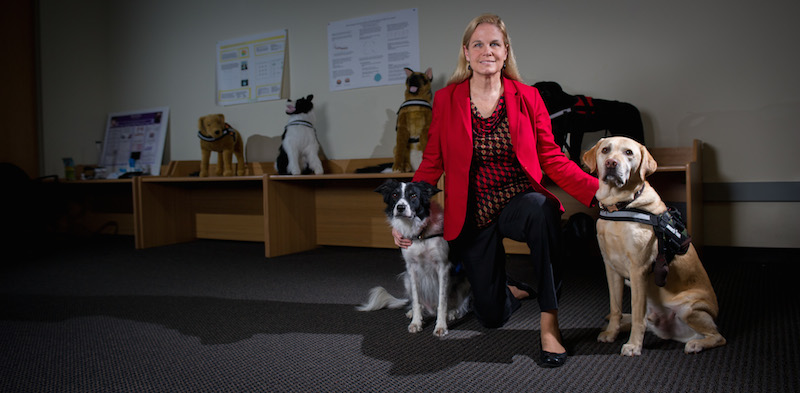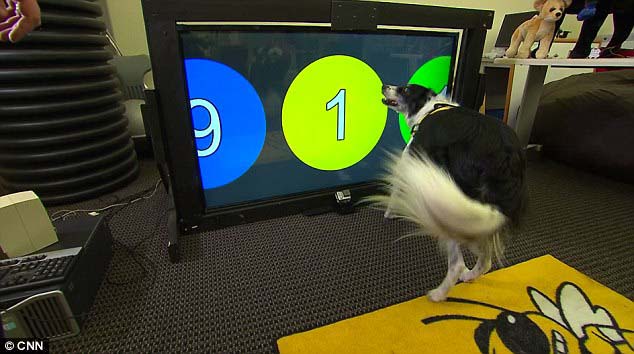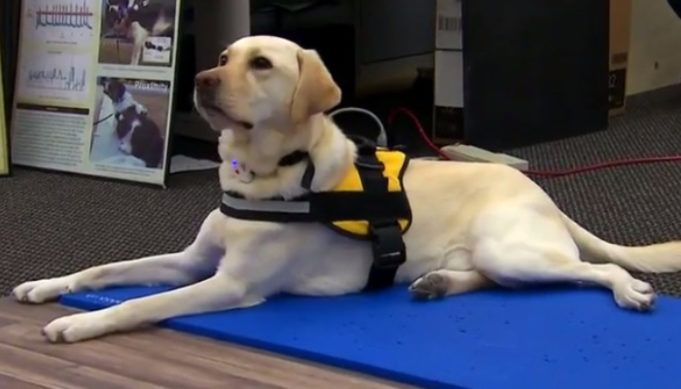Thanks to newly developed technology, your dog can now dial 911 to get help with a medical emergency.
Melody Jackson, associate professor and director of Georgia Institute of Technology’s animal-computer interaction lab, recounted the story of her grandmother Eleanor falling in her kitchen. Eleanor could not lift herself up, and her cries for help went unheard. She couldn’t reach the phone to call 911. She had to wait until her neighbor got home from work to receive any help.
Melody’s family got Eleanor an alert necklace, but she hated wearing it. So, it’s effectiveness was questionable. Her grandmother had a dog, and Melody said had this incident occurred today, that dog may have been able to get help for Eleanor.
That’s thanks to new developments in technology which allow dogs to be trained to call 911 during emergencies. Jackson and her team at Georgia Tech are developing and testing new products which allow canines to communicate to humans during emergencies, such as high-tech vests and doggy touchscreens that function as telephones.
Their current success is the touchscreen device. Dogs can put their nose to this screen and use it to call or text. Dogs can easily be trained to follow their owners’ verbal cues (such “get help!”)et and tap 9-1-1 on this screen.
Jackson is the founder of the FIDO project at Georgia Tech. The FIDO project is an ongoing project which looks at developing better ways for working dogs to interact with the humans they serve.
Jackson thinks this new touchscreen device could change and save lives.

Using Technology to Give Dogs Speech
Jackson, who also trains dogs, realized a few years ago that service and working dogs need better ways to communicate crucial information to humans. A military dog needs to communicate what sort of bomb it has just detected, while a medical alert dog needs to summon help for their owner having a seizure or entering a diabetic coma.
There was no reliable way for the dogs to do this, so Jackson and her team went to work on developing technologies to advance the idea.
Jackson and her colleagues trained several dogs to go to a TV-size touchscreen and push 9-1-1 when they hear the command “help.”
The computer can be programmed to call anyone when the buttons are pushed, not just 911.
Because dogs have specific color blindness, the buttons on the screen are blue and yellow. They are also separated so that the dog doesn’t make any accidental calls by pressing the wrong button or hitting something twice.
In addition to this touchscreen device, researchers have also developed vests for dogs to wear which also call for help and perform other crucial functions.
The vests have chew toys or braided ropes attached to them, which the dog bites on command in order to activate a computer located inside the vest to make phone calls, send texts, or even broadcast audio messages. The audio messages could alert passers-by that the dog has just called for help or that the dog’s handler requires additional assistance.
Currently, some seizure alert dogs are trained to help their owners during an episode by pushing them up against a wall to support their fall, and lick their face during the seizure.
In addition to all of that, Jackson would like to see the dogs tug the sensor in the vest to call 911 (with their GPS location), and activate a speaker which says, “Excuse me, my handler is having a seizure; please stay back.”
Jackson’s whole goal is to be able to get dogs and humans communicating more clearly. If a dog runs up to a stranger and there is a speaker that says, “Excuse me, my handler needs your attention; can you please follow me,” there is no room for confusion.

Inspiration for New Technology
Jackson recounted the tale of one of her former graduate students, Vincent Martin, who was blind. Martin had a guide dog named Karson to help him navigate.
One day, Karson stopped. Martin used his cane to feel around for obstacles or obstructions, but didn’t feel anything. Assuming the dog was mistaken or being stubborn, Martin gave Karson a correction tug to tell the dog to keep going. They stepped in wet cement.
The dog had no way to tell his owner that there actually was something in the path. If he had been able to do so, Martin would have known the dog’s halt was not a mistake or bad behavior.
Jackson and her team hope to soon see their products commercially available for dogs around the world to use. Current prototypes are still in development, and have some limitations.
Jackson says the issues they are currently working on are making the products more robust, developing longer lasting batteries, and preventing false-positives (accidental activations).
Check out this video of the 9-1-1 touchscreen in action!













